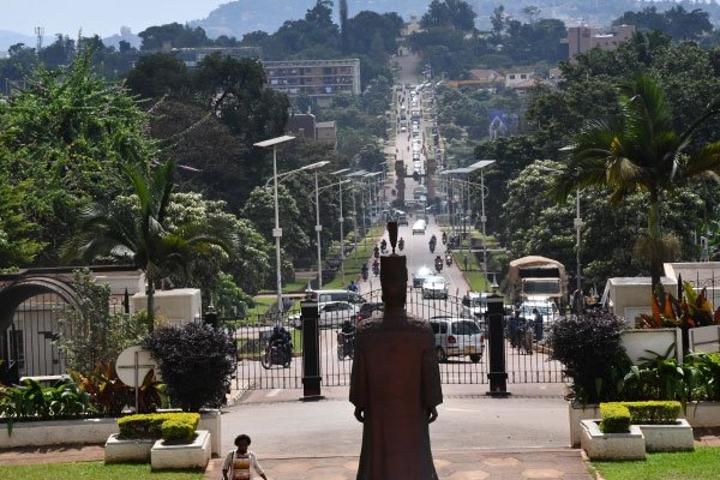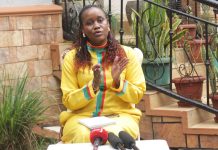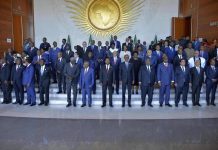Africa-Press – Uganda. On a sunny Saturday morning, motorists go about their hustles in Bulange, Mengo in Kampala. Some pedestrians make their way up and down the mile, dotted with tree shades, where some folks take shelter.
As a travel enthusiast, one of the tourist sites I had never paid attention to is the royal mile in Buganda Kingdom, despite the fact that I have lived in Kampala for many years. But this day, I make up my mind to go there for a travel excursion. At the entrance of the gate to the administrative seat, is a security guard, who directs me to the office of Buganda Heritage and Tourism Board. Gifts and books I am welcomed by Carol Nnalinya, the chief executive officer of the board, who then introduces me to tour guides. I am not asked to pay entrance fees, perhaps, because I am a journalist. At the administrative gate, is the office of the Buganda Heritage and Tourism Board. Here I find gifts and a collection of books whose literature richly details the kingdom. The Royal Mile connects two major seats of Buganda Kingdom. There is the palace of the Kabaka and his administrative seat.
The mile became royal after Kabaka Frederick Muteesa II visited Scotland, toured the royal mile there and replicated the idea in Bulange. Along the mile are two roundabouts.Roundabouts and towers The first roundabout is in the middle of the road, with two brown towers. Within the second one, are four small stones. It is only the Kabaka that drives straight through the two roundabouts.
At this point, I break ice with Michael Bugembe, a senior tour guide about the kingdom’s heritage and facilities.
After exchanging pleasantries, he then leads me to the entrance of the administrative seat, where our body temperatures are checked. We proceeded to sanitise our hands and we are led through the security check. The grand statueFrom the concrete steps that lead to the tarmac driveway, my eyes are drawn to the grand statue of Kabaka Ronald Muwenda Mutebi II, the current king of Buganda Kingdom. He is smartly clad in royal robes. One of his feet is in motion, which as my guide explains, is symbolic of the traditional leader in charge of his people and kingdom.
It was built by the students of Makerere University under the supervision of their lecturer, Francis Nagenda. The work was completed 27 years ago, in commemoration of the restoration of kingdoms, including Buganda.
56 clans of Buganda
Along the stretch of the mile, are sculptures representing some of the . The clan carvings were erected on tended green grass dotted with plants and trees known as Kabaka’njagala, translated as the king loves me.
The tall trees characterised by long oval leaves add an aesthetic look to the royal mile.
The statue was established in front and in the compound of the Bulange administration. The compound is an expansive space with tended grass and trees.
Lukiiko
One of the main offices in Bulange, is the , the kingdom’s parliament. In , the kingdom’s annual budget is discussed and and issues affecting the kingdom are raised. It sits eight times a year. Kabaka attends twice, to officially open and then close it.
Namulondo
While presiding over the Lukiiko, the Kabaka sits on his official seat known as . The seat is delivered by royal guards and has artistic symbols, such as the spear and the shield, which are traditionally used to protect the king. It also has a lion.
Like the Parliament of Uganda, the Lukiiko is also presided over by a speaker, who also has clerks. Unlike elected members of Parliament, the Kabaka chooses representative from different counties of the kingdom to represent his people. Similar to the Parliament of Uganda, the Lukiiko has a gallery, where those interested in visiting the kingdom are given an opportunity to have a glimpse of what happens.Bugembe adds that visitors can make a contribution to the Lukiiko, through their representatives after the plenary has sat.Offices In the same compound where the Lukiiko sits, is the office of the Katikkiro (kingdom’s prime minister), ministers and officials in the kingdom, affiliated businesses and establishments.
After touring the Lukiiko, we return to Bugembe’s workstation adjacent to the main gate of Bulange. At this point, he links me up with Fred Ndawula, a colleague who works at the Buganda palace.
The two work one mile apart. Ndawula is a guide at the palace. Like Bugembe, he warmly welcomes me and leads me into the official palace.
Official palace
Before we proceed, we are subjected to a security check by a soldier. It is unlike the one at Bulange seat, which is manned by civilian personnel. My guide takes me through the history of the palace.
“Buganda is one of the oldest kingdoms in Uganda. It started about 800 years ago. It has been led by 36 kings. Kabaka Ronald Muwenda Mutebi II is the 36th king,” says the guide.
He adds: “The first son of the Kabaka does not become king but the head of the family, so he cannot culturally hold two responsibilities. And it is not automatic that the second son becomes the Kabaka.
In the past, chiefs would sit and discuss the choice. We had a parliament where they would sit and decide. That is the Lukiiko,” says Ndawula.
Intricacies of the palace
In Buganda, every Kabaka was free to establish a palace which would become the capital of the kingdom. Many chose hills near Lake Victoria. Ndawula explains that the choice was partly for security reasons.
In case of unrest or war, the king would easily escape to the islands. Most of the palaces were built with reeds and similar plant materials. Kabaka Daudi Chwa built the palace in 1922.It was the first modern palace in the kingdom. Kabaka Chwa got the structure (Twekobe) plan on his first visit to England in 1913. It has several rooms and wings.
On top of the palace structure is a dome. Kabaka Mutebi does not stay in the palace (Lubiri) perhaps due to the fact that blood was spilled there.
The palace evokes ghastly memories for the royal family. It was attacked by soldiers during Milton Obote’s presidency in 1966, events that led Kabaka Muteesa to flee to exile in the United Kingdom for safety.
He was the last Kabaka to stay in the palace. Kabaka Mutebi stays in Banda palace, situated 10 kilometres from Bulange. But he frequently visits Bulange palace to meet important guests and celebrate the kingdom ceremonies.
Past attack on the palace
It remains the official palace in the Kingdom of Buganda. Part of the memorabilia of the war still exists in cannon that was given to fallen president Idi Amin by fallen Libyan leader, Colonel Muamar Al Gaddafi.
Amin ousted Obote in a coup d’état. History has it that Obote ordered Amin to attack the palace. The cannon sits on grounds adjacent to an entrance within the palace, opposite a gate made of reeds, a building material historically used by Baganda and other Africans during construction.
On the right are old cars of Kabaka Muteesa. He owned the Rolls Royce, Bentley, Cadillac and Daimler. Slightly below, are inhabited houses, a garden and then a slope that leads to a signpost announcing ‘Amin’s Torture Chambers’.
Dark chambers
In the fairly dark chambers, are dingy rooms. The walls bear words believed to be departing notes of those who lost their lives there. The royal mile is rich in physical structures, art and nature. The rich heritage of the kingdom interwoven with Uganda’s political past, make it a worthy tourism site to visit and learn.
Atop the gate at the Kabaka’s palace, are lions symbolic of power and influence of the king. He is known by many names. One of them is ‘the lion’, a symbol of strength and protection of his subjects.
At dusk, the street lights are switched on. Anyone who appreciates beauty would want to capture the picture of the expanse. The gates at both ends of the Royal Mile are made of see-through metal with visibility of imposing structures at both ends. Timothy Kintu- travel maverick The Buganda Royal Mile, locally known as the Kabaka’njagala Road is a straight path connecting the Buganda royal palace and her parliament (administrative seat).
The name Kabaka’njagala came into existence because the road was aligned with huge candlenut trees (kabaka’njagala in Luganda) that Kabaka Mutesa II distributed to his subjects to plant. Fifty two candlenut trees were planted, each representing a clan in Buganda Kingdom.
Candlenut trees
The candlenut tree (Aleuritesmoluccanus) is a native plant in Asia, especially in China, used for varnish, food, and in other places, as a property line manager — because their silver under leaf made the trees visible and easy to locate.
In Uganda, candlenut tree seeds are used as an improvised toy to play, a marbles game locally known as Dulu. Kampala city guideIt hosts some of Kampala’s oldest and best tourist sites, including the Kabaka’s palace, Gadaffi mosque, Kasubi tombs and the cathedrals of Namirembe and Rubaga.
Because it is surrounded by hills, this area boasts of magnificent views of the city as well as an insight into Kampala’s rich history. Just up the road from Old Kampala, Mengo is a bustling hub of shops, and the local Mengo market. Sprinkled with some of Kampala’s most impressive cathedrals, Mengo offers a range of options.
Kent Safaris
At the gate of the palace is a traditional fireplace that has been burning since the inception of the Buganda Kingdom and one that never stops burning, lest a king is dead.
Here is a representation of all the clans and their respective role in this kingdom since time immemorial as narrated by a royalist at this fire source. The architectural design of this building is a spectacular tour site to many local and international visitors.






